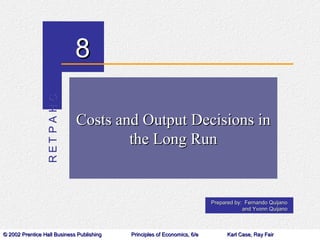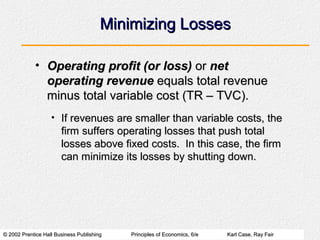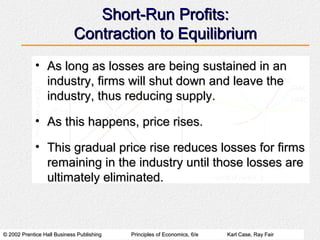This document summarizes a chapter about costs and output decisions in the long run. It discusses concepts like profit, total costs, variable costs, fixed costs, and how firms determine whether to operate, expand, or shut down based on whether their revenues exceed their total costs and variable costs. It also covers long-run costs related to economies and diseconomies of scale, and how industries adjust in the short and long run through expansion, contraction, entry and exit of firms.














